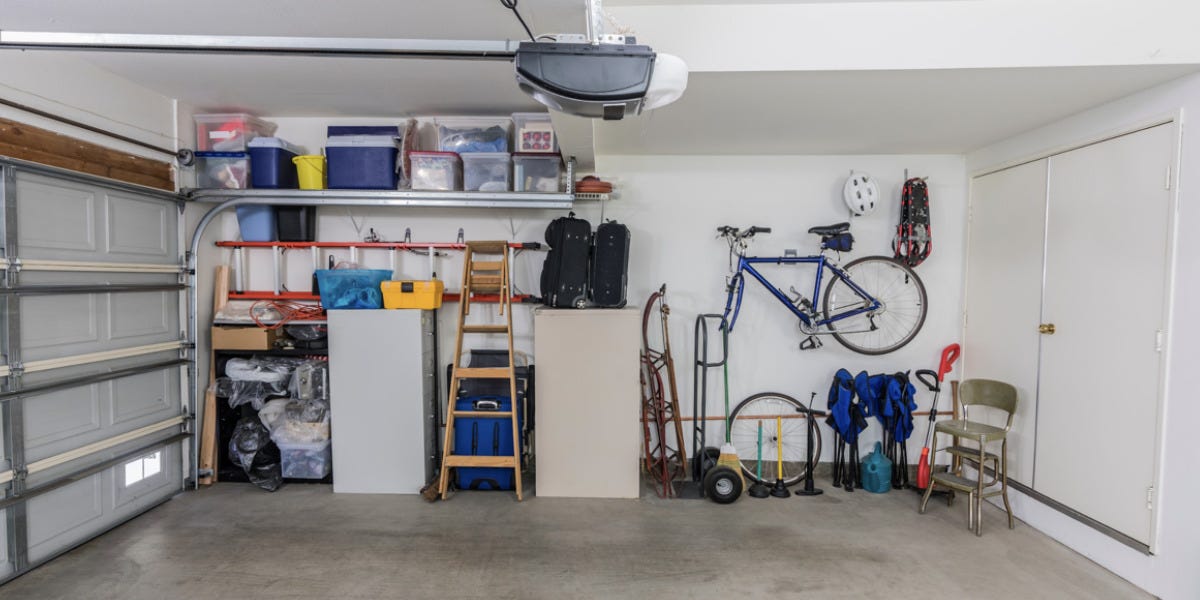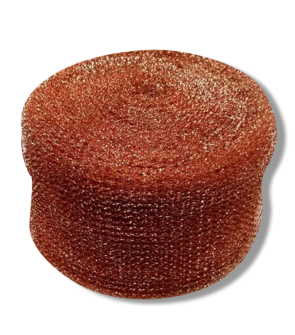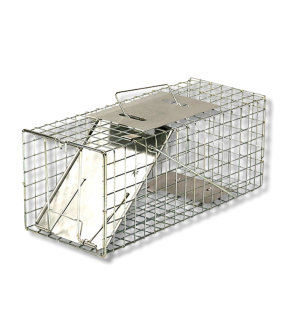Wildlife in Garage & Shed
Most Effective Products
Common Wildlife in Garages and Sheds
While they might seem cute and cuddly scampering about outside, wildlife presents several dangers if they try to settle in garages or sheds. Often homeowners will encounter animals such as chipmunks, opossums, raccoons, skunks, or woodchucks in their garage or shed.
Because garages or sheds are used for storage for fabrics, boxes, food, feed, and not consistently visited makes it enticing to wildlife. Like with most wildlife, these animals can carry diseases which can be transmitted to you, your family, and pets.
Take several precautions against wildlife by learning about these creatures and ways to control them with this professional article.
While following these guidelines, local and state laws are still present and must be followed. It is recommended for the homeowner to visit their local animal control office or state website to visit proper rules and regulations associated with the control of wildlife.
If you are not seeing a pest listed here then contact our customer service team by phone, email, or in-person at one of our store locations for professional recommendations.
Chipmunks
Despite their tiny size, chipmunks can be quite a nuisance due to their consistent burrowing. Which can cause damages to your mowers, idle machinery, personal belongings, and feed or food kept in these sites.
Identification

Chipmunks are small rodents with reddish brown fur, white bellies, and dark stripes on their fuzzy tail, back, and eyes. They measure 3-8 inches.
Inspection

Chipmunks can be found near heating devices, in idle machinery, feed bags, pet food bag, boxes, edges of rooms, and underneath garages and sheds.
Treatment
Step 1: Eliminate Food and Habitat
To encourage a chipmunk to leave, eliminate their food sources in and around your garage and shed.
Store all food and fabric materials kept in these structures in a sealable plastic container with a tight-fitted lid. Get rid of cardboard boxes and replace them with sealable plastic storage bins.
Outside, mow the lawn when it reaches its appropriate height and prune overgrown shrubbery.
Step 2: Use Humane Trap
Chipmunks are naturally fast and scurrying creatures that will not fall easily to snap traps. For this reason, we recommend using a humane live animal trap.
The Solutions Humane Live Animal Trap is an effective box trap that traps and holds various animals both indoors and outdoors. To capture chipmunks, use the same size version of this product.
To use, release the trigger mechanism, open the door and set the trap. Once the trap has been set you’ll need to set bait inside. For chipmunks, we recommend using a combination of peanut butter, fruits, and cereal grains, or even flower bulbs.
After setting the trap, place them along pathways used by the chipmunks for travel, along walls, in dense foliage, and at the edges of rooms and buildings.
When the chipmunk has been captured, seal all openings with caulk and copper mesh.
Opossums
Opossums are non-aggressive animals that can live just about anywhere around your garage and shed. Though rate, they will bite if they feel threatened. They can transmit several diseases with their droppings, urine, or bites.
Identification
Opossums have lond and coarse fur that is colored gray to white. Typically, they are 2 feet long from snout to tail. They also have long, scaly, and slightly hairy tails that they can use to support their body.
Inspection
 Opossums will live in the clutter, boxes, corners, and crevices of garages and sheds. If sheds are elevated, then they will live underneath it.
Opossums will live in the clutter, boxes, corners, and crevices of garages and sheds. If sheds are elevated, then they will live underneath it.
Treatment
Step 1: Eliminate Food

By removing food sources in and around your garage and shed will make it less appealing.
Keep garbage cans indoors and outdoors sealed with a tight-fitted lid. Move these bins away from any structure foundation in your yard.
Feed pets indoors and clean up all uneaten food and water from their dishes.
If you have food bearing plants, pick from them promptly and any that fall on the ground.
Step 2: Cover Openings
 Cover all vents and openings that provide access to garages and sheds. Ensure vents on these structures are covered or replaced if damaged.
Cover all vents and openings that provide access to garages and sheds. Ensure vents on these structures are covered or replaced if damaged.
Seal openings with caulk and larger voids with copper mesh.
Make the necessary repairs to parts of your structure that have voids that cannot easily be filled.
Step 3: Set Live Traps
Using a live humane trap like the Solutions Humane Live Animal Trap to get rid of possums in garages and sheds. You will need the large size of this product for opossums.
Set the trap in an area where the opossums frequent, but not in direct sunlight otherwise the animal could die from dehydration or heat exposure.
Use an appropriate bait such as foods that are sweet. Examples of this could be honey buns or other foods like fruit, peanut butter, or vegetables.
Do not keep an animal trapped in the cage for longer than 24 hours.
Raccoons
Raccoons are adaptable creatures that thrive in multiple environments, including garages and sheds. Generally, they are not social animals, but can attract more members of its species with their defecating habits.
They repeatedly use the same spot, which can be seen as large piles of waste. Other raccoons will use the same area for territory purposes often leading to greater odor, potential damages, and larger raccoon infestations.
Identification

Raccoons are easily recognized by their black mask across their eyes and cheeks and have black rings around their bushy white tails. Long, thick fur is colored a gray. They also have pointed snouts and measure 24 to 38 inches long.
Inspection
Raccoons like to hide in the ceiling corners, storage boxes, idle cars or machinery, piles of clothes or other fabrics, furniture, and underneath work benches within garages and sheds.
Treatment
Step 1: Eliminate Food Sources
Often raccoons are seen inside of garages and sheds because of the possibility of an abundance of food. These animals are intelligent and will use their hand-like paws to figure out how to open something.
Because of this your goal should be to eliminate as many food sources as possible. Keep lids on trash cans as secure as possible or place something heavy on top of the lid that raccoons cannot move.
If you foliage with fruit or vegetables, you should consistently gather foliage as they develop and install proper fencing around them for protection.
Bring pet food dishes indoors so raccoons cannot feed from during the night. You should also toss out unfinished food and water.
Step 2: Set Out Traps
Determine where all openings at least 4 inches have been seen and where raccoons have been active. This is where you should set the Solutions Humane Live Animal Trap.
Use either the large or medium size of the Solutions Humane Live Animal Trap. These animals prefer sweet foods such as marshmallows so this should be used as bait inside of the humane trap.
You will then set your trap by pushing on the door lock and lifting the door plate. Keep the door plate lifted while pulling the trigger arm forward to set it. You will know it is set when the trigger arm's hook catches the door.
Skunks
Skunks are famous and most recognized by their strong foul odor, released from their anal glands when threatened.
Most homeowners know to stay away from these pests for this reason, but unfortunately, they do not not as they often sleep in these areas during the day.
Identification
Skunks are medium sized animals that are black with a white v-shaped marking on its back down to its tail. They have long, wide, and bushy tails. It also has long, curved claws used for digging.
Inspection
Skunks will live in tunnels or holes under your shed or garage. They may also live in dense vegetation surrounding these structures.
They can find their way into these structures where they will rest underneath clutter, in-between boxes, and other ground-level areas that are secluded.
Treatment
Step 1: Eliminate Food Sources
If you have a skunk living in your garage or shed then one of the first things you should do is to control their food source.
Be sure your body and face is fully covered when going anywhere near areas you suspect skunk activity. For your safety, leave the door open to these sites so you or the skunk can safely escape.
Possible food sources that may entice skunks into your garage are pet food, garbage, or people food that you are keeping in there.
Keep trash in a garbage bin with a lid and move those away on the outside from any building foundation in your yard.
Place food in plastic containers with secure lids so skunks cannot gnaw or chew through them.
Step 2: Trap the Skunk
You will have to use a humane animal trap like the Solutions Humane Live Animal Trap to get skunks out of your garage and shed.
To trap skunks in garages and sheds, use the medium size of this box trap.
Place the Solutions Humane Live Animal Trap near den entrances, along the interior and exterior walls, and in the direct pathways used by skunks.
To bait these animals into these traps, we recommend using sardines or meat (food with strong odors) at the back of the cage behind the trigger plate to encourage the skunk to step further into the trap.
Once the skunk goes to the back of the trap it will step off the trigger plate and cause the front door of the cage to close.
Approach the trap with caution since skunks can still spray up to 15 feet from inside of the cage.
Woodchuck
Woodchucks, also known as groundhogs, are invasive creatures that are hard to catch. They can cause a lot of damage as they go about digging holes under garages and sheds. Over time, these structures can crack or slope.
Identification

They have compact, chunky bodies with short legs and a pair of large teeth. Also they have short tails. In size, they are 16 to 20 inches long.
Inspection
Groundhogs are more of an outside pests around garages and sheds, they do not come into these structures. Instead, they will burrow under these structures.
Treatment
Step 1: Exclude Entries
Filling all entry points around your garage and shed structure with caulk and copper mesh will stop these animals from possibly entering.
Refill holes with rock or other material they cannot easily gnaw or push through.
For added protection, install below-ground fencing around your entire structure to deter these animals from burrowing.
Step 2: Use Traps

If you find any burrows, then place these traps near them. Use either the large or medium size of this product.
Once you have found a good area to place the trap, disguise it by covering it with natural elements like dirt, leaves, twigs and other such items to make these animals more likely to explore the trap.
We recommend using apple slices, carrots, lettuce, or a combination of all these as bait to lure groundhogs into traps.
Check the traps daily and re-bait as needed. The fresher the food the better odds of these animals visiting the trap.
Key Takeaways
What Animals Live in Sheds and Garages
- Common animals to live in and around garages or sheds are skunks, woodchucks, raccoons, opossums, or chipmunks.
How to Find Out What Animal is Under Shed or Garage
- The easiest way is to set up outdoor cameras or look for signs of their activity and droppings.
How to Get Rid of Animals in Sheds and Garages
- First, remove all food and water sources. Then reduces hiding places in and around these structures. Lastly, use humane live animals traps to get rid of these pests.

















































































































































































































































































































































































































































































































































